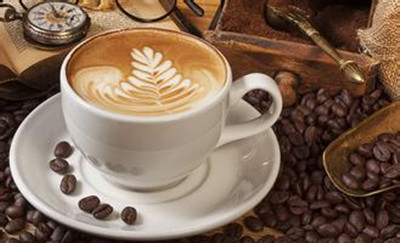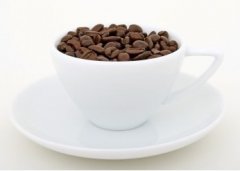The true meaning of the definition of fine coffee to fine coffee

Definition of fine coffee
There's a current headline: "Old Don [Donut] Enters the Fine Coffee Wars," and we know that the true meaning of fine coffee is unclear. But why are there arguments about semantics?
The problem now is that these words have very real market consequences. When consumers drink cups of coffee they think is boutique coffee, but in fact only average quality coffee combined with persuasive marketing, consumers are misinformed by this new title that the coffee industry loses its meaning in the word boutique. Most coffee drinkers gain knowledge of coffee from their consumption experience, what is written on the package, what is written on the menu, and what the barista says about the coffee they drink. Thus, when people are adept at selling boutique coffee from old donuts, economic rationality will lead to a credulous, inexperienced, or uncaring consumer choosing donuts and beverages that they believe are not yet available of similar quality that may be many times more expensive.
When uneducated consumers buy coffee they think is fine, it reduces the demand for actual fine coffee. Quality suffers when the market for a product exceeds the quality of the product and increases the price of the product; consumer misconceptions about specialty coffee can discourage farmers from interested in cultivation and preliminary processing techniques such as harvesting fully ripe coffee beans that provide the necessary premium quality value of coffee.
Here, Coffee, Tea and Ice Cream Magazine introduces the latest definition of Fine Coffee by the Specialty Coffee Association, USA (SCAA), written by SCAA Executive Director Rick Rhineha:t. The last time SCAA published a definition of specialty coffee was in an article more than a decade ago titled "What is the Definition of Specialty Coffee?" by Don Holly, then SCAA's Executive Director. In line with the mission of Coffee, Tea and Ice Cream Magazine to promote the coffee industry in Asia, SCAA's definition of boutique coffee educates consumers about what boutique coffee is.
The real meaning.
Specialty Coffee by Ric Rhinehart
In a 1999 article about SCAA's Chronicle of Fine Coffee, Don Holly wrote the following article on how to define fine coffee: "I understand the origin of the word fine coffee is that the first coinage of the word was Erna Knutsen of Knutsen Coffee Company speaking to delegates at the International Coffee Conference in Montreuil, France in 1978. In essence, the concept is simple: special geographical conditions produce coffee beans with unique flavors, which she calls "fine coffee." The fundamental premise of this idea is that professional coffee beans will be well prepared, roasted fresh, and properly brewed. During her 20 years of speaking the fine coffee craft industry has been slowly changing. "This reference is the basis for the fine coffee case and the entire history of the organization that we have built.
A closer look makes it clear that coffee's unique chain of production influences the way we can recognize, develop and promote specialties. Unlike grape sprinkles, beverages that we regularly analyze coffee, there are many participants controlling the production of beverages. Taking wine as an example, a single individual or company is usually responsible for growing, herding, harvesting, processing, packaging the grapes; and ultimately producing the beverage. In addition, any sophisticated wine sprinkling service relies on multiple pickings of cork and pouring the product into a suitable glass bottle. Coffee, on the other hand, tends to arrive in the hands of customers after a long series of roasts from farmer to middleman, depending on the role of each role in the supply chain. Therefore, in order to really see what fine coffee is, we have to examine the coffee production chain at each stage and establish professional definitions at these levels.
The first key concept is to consider the potential of the supply chain. Until now, roast coffee was the concept of brewing and transforming into a beverage, and specialty coffee was the locked possibility of a potentially wonderful taste experience. From the most basic start, so to speak, we must limit fine coffee from the proper cross of varieties, climate, soil chemistry, and livestock. For example, coffee grown at the wrong height and in the wrong soil will not produce fine coffee. With the right varieties and fertilizers, but the wrong climate, potentially high quality is destroyed. Ultimately, plants and selective harvesting of livestock are essential, and potential maintenance illustrates the next key concept: conservation.
A ripe coffee berry on a healthy plant of the right variety, grown in the right soil, enjoying the right climatic conditions, and proper care, must be selected at the peak of ripening to maintain the coffee with high potential.
Brown fruit. Coffee buyers often tell coffee growers that the single most important condition is that ripe coffee beans are a guarantee of high quality.
From the harvest point of view, a new round of potential defects. Coffee cherries must go through several processes, and this one, for most specialty coffees, begins with placing the ripe fruit in a wet mill. The time between ripening and processing has a huge impact on coffee production. Fine coffee must be picked from trees and sent quickly to AR processing plants. Whether the coffee is machine dried and then thoroughly washed, or placed on a machine that separates the pulp, the preliminary processing stage must be carefully managed so that the coffee is not harmed. Another critical thing to do after husking and drying is to dry too quickly, too slowly, and the coffee must be uneven, or dry and then wet again: all of these can be disastrous for the final quality of the coffee. Coffee must be aged before it undergoes the final stages of raw material processing and transportation.
Relative humidity, temperature, storage containers and conditions are critical. Finally, coffee must be shelled, sized and packaged for transport. More critical here, errors in the screening process include the choice of packaging or storage conditions affecting shipping coffee.
Coffee moves on to the next stage of transformation: from green beans to roasted coffee. Here we must deal with the third important concept, expression. The furnace must identify the potential of coffee, develop the flavor skillfully, and properly package the roasted product. An unskilled baker, damage to equipment, or poor packaging can lead to disaster.
After roasting and before brewing, coffee must be ground. Grinding is best done as close as possible to the time coffee is made, because much of the coffee's oxygen will be completely released, but grinding will be fine. In addition, the large area of coffee grinding also causes coffee to oxidize and age rapidly. Grind-sized particles are also important, affecting the next step in coffee extraction. Coffee ground too fine may destroy the extraction, ground too coarse, and coffee may never reach its full flavor potential in the cup.
Finally, where every step from the coffee tree to the consumer is carefully planned, the final process must be considered: coffee must be extracted, With coffee machine coffee, or infusion method, such as the use of French pot, strict implementation of water quality, brewing temperature, coffee and water contrast, must establish a fine coffee beverage extraction standards.
So how do we define specialty coffee? In a broad sense, we can understand that coffee is a long journey from coffee tree to coffee cup. More specifically, we measure the criteria and methods that allow us to determine that coffee has been properly cared for. SCAA defines the green stage of fine coffee as follows: thermal defects, moderate size and dry, no corrosion, etc. have distinctive characteristics. In practical terms, this means that coffee must be able to pass the grading, cup testing tests. The pursuit of development and application, through further work by the Coffee Quality Institute, has helped define the definition of raw specialty coffee, but much work remains to be done to refine these standards and add new ones to help preserve the flavor of coffee beans.
From raw beans to the final stage of the drink, there are other criteria. For example, SCAA brewing standards for drip coffee determine the proper proportion of water, coffee, proper extraction, brewing temperature and push time and temperature. There's also a standard preparation and a coffee.
Immersion is currently under development. As part of the Roasting Standards process, Roaster Guilds perform certification roasters, ensuring they receive proper education and training in maintaining and revealing the full potential of professional coffee beans. Similarly, the barista guild is well on its way to developing a certification for baristas to ensure that the final beverage maker is also an expert who can extract all the coffee flavors into the cup. Ultimately, specialty coffee will be determined by the quality of the product not a green bean, roasted bean, or prepared beverage and by the quality of life that coffee can provide to all those involved in growing and preparing it. Coffee, which provides satisfaction and adds value to John's life and livelihood, is a true boutique coffee.
Important Notice :
前街咖啡 FrontStreet Coffee has moved to new addredd:
FrontStreet Coffee Address: 315,Donghua East Road,GuangZhou
Tel:020 38364473
- Prev

The most detailed introduction of coffee varieties in history
There are many kinds of coffee, and the products from different places have their own unique characteristics, which are generally distinguished by color, aroma, taste, acidity and wine taste. Extreme characteristics are not the only condition for becoming a famous coffee. Extreme strength can be both advantages and disadvantages, depending on personal preference and acceptance, depending on the balanced distribution of color and aroma, and can highlight the characteristics of a certain aspect. In coffee
- Next

Determine the characteristics of coffee ─ four flavors and one fragrance
All the color, aroma and taste of coffee are characterized by some chemical changes in raw coffee beans after baking. ◎ bitterness: caffeine, one of the basic flavor elements of coffee. ◎ sour taste: = = tannin acid, the second basic flavor element of coffee. ◎ strong alcohol: = = coffee has a strong aromatic mellow taste. ◎ sweetness: = = when the sugar in the raw bean of coffee passes through
Related
- Detailed explanation of Jadeite planting Land in Panamanian Jadeite Manor introduction to the grading system of Jadeite competitive bidding, Red bid, Green bid and Rose Summer
- Story of Coffee planting in Brenka region of Costa Rica Stonehenge Manor anaerobic heavy honey treatment of flavor mouth
- What's on the barrel of Blue Mountain Coffee beans?
- Can American coffee also pull flowers? How to use hot American style to pull out a good-looking pattern?
- Can you make a cold extract with coffee beans? What is the right proportion for cold-extracted coffee formula?
- Indonesian PWN Gold Mandrine Coffee Origin Features Flavor How to Chong? Mandolin coffee is American.
- A brief introduction to the flavor characteristics of Brazilian yellow bourbon coffee beans
- What is the effect of different water quality on the flavor of cold-extracted coffee? What kind of water is best for brewing coffee?
- Why do you think of Rose Summer whenever you mention Panamanian coffee?
- Introduction to the characteristics of authentic blue mountain coffee bean producing areas? What is the CIB Coffee Authority in Jamaica?

